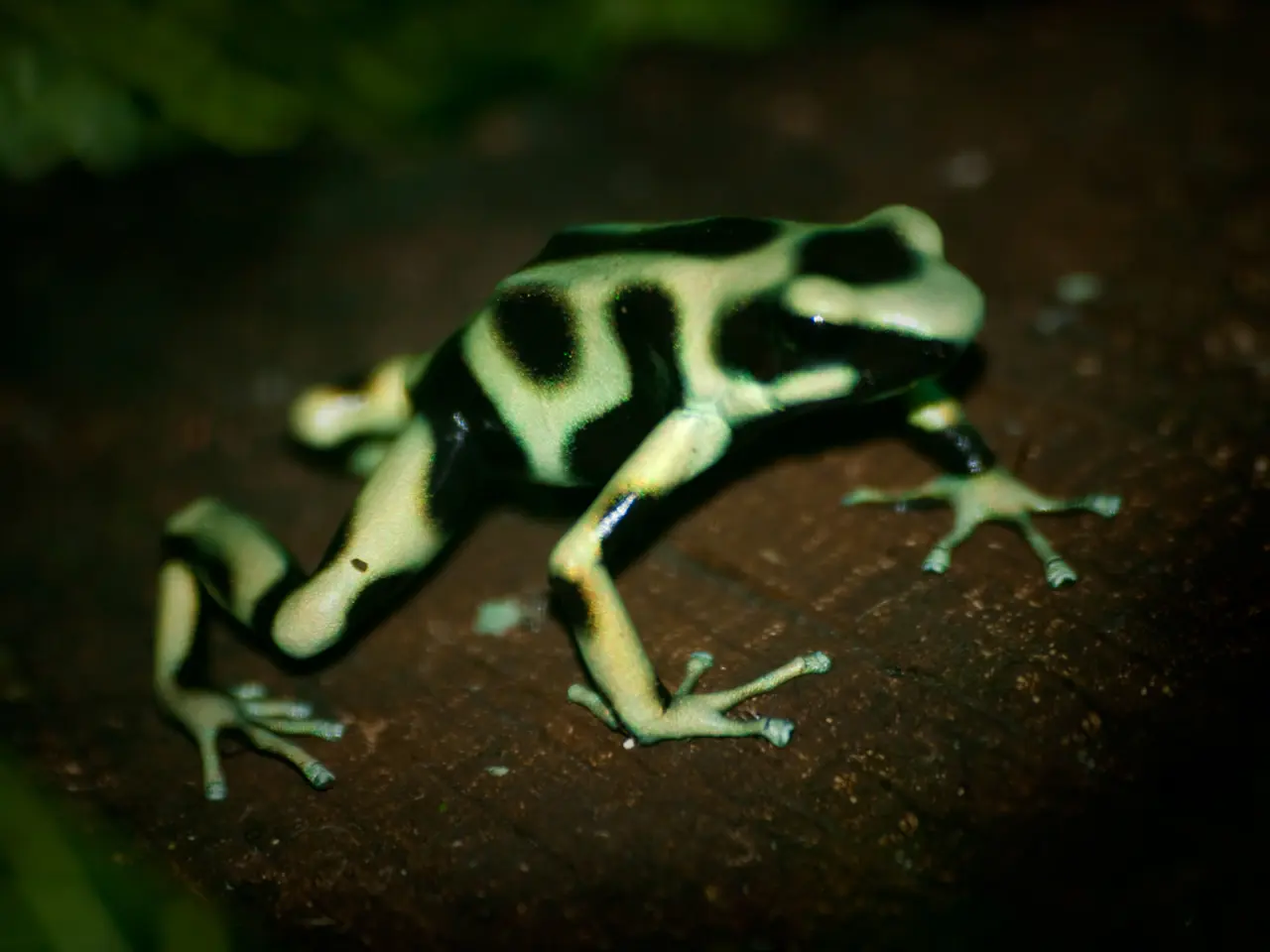Frogs absorb water and oxygen through their permeable skin, a unique adaptation that allows them to live in aquatic environments.
Frogs, with their thin and mucus-covered skin, are unique creatures that have adapted to their environment in fascinating ways. One such adaptation is cutaneous respiration, a process that allows them to absorb oxygen from both air and water through their porous skin. However, this very trait that enables them to survive underwater and endure long periods of hibernation also makes them vulnerable to environmental pollutants and climate changes.
Frogs' skin, permeable to oxygen molecules, is also susceptible to various environmental pollutants. Studies have shown that commercial chemicals and microplastics pose a danger to these amphibians. These contaminants accumulate in water bodies and, when absorbed through the frogs' skin, can harm them directly and affect the broader aquatic food web, as frogs play a crucial role in insect control and ecosystem health.
The destruction of frog habitats, particularly in the Amazon rainforests, is a significant threat due to climate change and intensified drought. The intensification of drought and heat threatens the survival of these creatures, especially in regions like Brazil, Argentina, and Paraguay. Frogs in arid regions can store moisture and last for months or even years without rainfall, but this ability is being tested as climate change alters temperature and precipitation patterns.
In addition to the physical threats, climate change also introduces new challenges. Over 40% of frogs, salamanders, and other amphibians are at risk of extinction due to climate change combined with habitat destruction and pollution. Pathogens like the chytrid fungus, which thrives under changed environmental conditions, have decimated populations such as the green and golden bell frogs, further threatening species already stressed by pollution and habitat loss.
Exposure to radiation in contaminated environments is another stress factor shown to affect amphibians. Although levels found are often below dangerous thresholds, these exposures can cause physiological and genetic changes.
In conclusion, frogs and amphibians are highly sensitive to environmental pollution and climate change due to their permeable skin, biphasic life cycles (aquatic and terrestrial stages), and limited dispersal ability. These factors make them indicators and victims of ecosystem health decline. It is crucial to address these issues to ensure the survival of these vital species and maintain the balance of our ecosystems.
[1] Plastic pollution and its impacts on amphibians: A review. (2020). Journal of Environmental Management. [2] Radiological risk assessment for amphibians. (2015). Journal of Environmental Radioactivity. [3] The impact of chemical pollutants on amphibians. (2018). Environmental Pollution. [4] Climate change and amphibian declines: A global synthesis. (2015). Global Change Biology. [5] The chytrid fungus and amphibian declines: A global perspective. (2004). Nature.
- The permeable nature of frogs' skin, similar to a sponge for oxygen absorption, also makes them susceptible to harm from plastic pollutants and commercial chemicals in water bodies, as such contaminants can accumulate and directly affect their health and disrupt the aquatic food web.
- Climate change not only poses physical threats to frogs but also introduces new challenges, as over 40% of amphibians are at risk of extinction due to impacts of climate change combined with habitat destruction and pollution, with pathogens like the chytrid fungus thriving under changed conditions and further endangering these vulnerable species.




